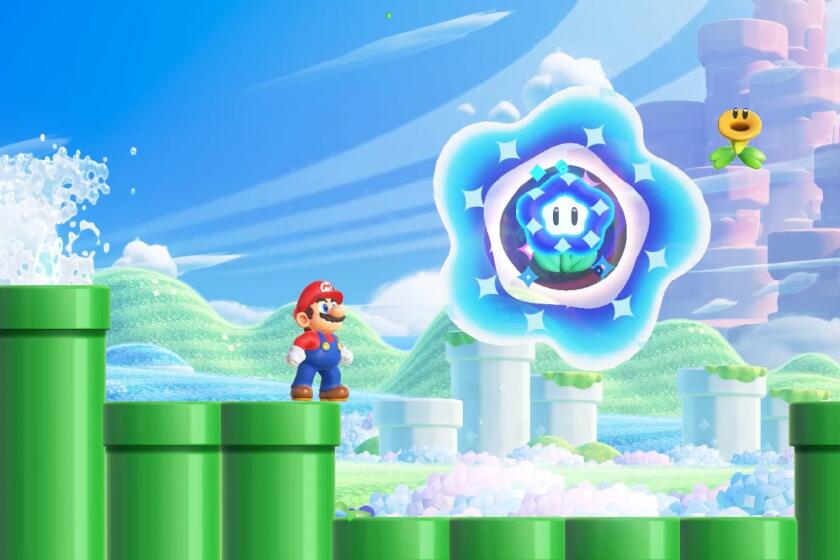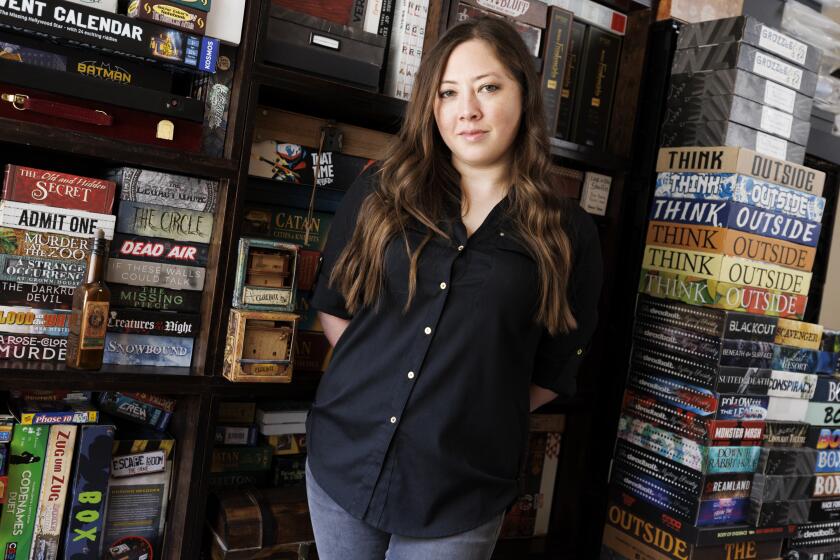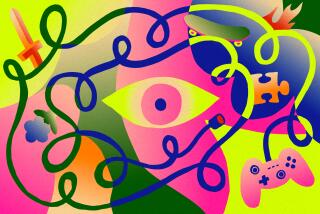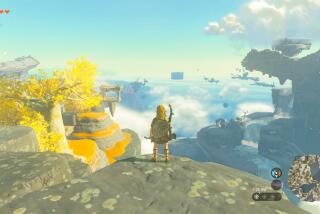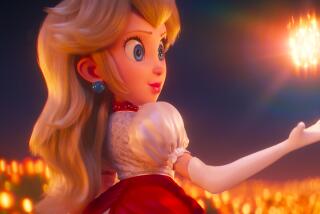Princess Zelda is the year’s most butt-kicking childless cat lady

- “The Legend of Zelda: Echoes of Wisdom” is the first core game of the franchise to center Princess Zelda. The result is inventive and character-driven.
- “Echoes of Wisdom” even feels topical at times, as Zelda battles conspiracies as well as monsters.
About 15 hours into “The Legend of Zelda: Echoes of Wisdom,” I came across a character expressing concern for Princess Zelda: “Is she overextending herself for the sake of the kingdom?”
I bristled.
“Echoes of Wisdom” is the first core “Zelda” game in which the titular member of royalty is a fully playable character. She’s often hidden away, usually in need of saving, her rescuer the green-outfitted swordsman Link. A hero, an ace swashbuckler and an expert marksman, no one ever wonders if Link is too delicate to save the magical kingdom of Hyrule.
Different characters, of course, come with different rules, and Nintendo is rewriting many of them for “Echoes of Wisdom.” My concern — that Princess Zelda was being handled, perhaps, with kid-gloves, and that even her own game must express surprise at her accomplishments — would prove unwarranted. And revealing. If Link is a cipher, an increasingly androgynous hero meant to be a stand-in for players the world over, Princess Zelda in “Echoes of Wisdom” feels more fully drawn.

And no one need worry about this childless cat lady overextending herself. By reframing the franchise from Link to Zelda, Nintendo has reimagined the game — often for the better.
If Link is puzzle-solving muscle, Zelda is conjurer, a solution-based thinker whose approach to monsters, dungeons and rifts that turn the world into fragments is equal parts patience, humor and, yes, action. Zelda is as likely to attack a foe as she is to take a nap, summoning her own army of creatures as well as a bed. This Zelda knows how to pick her battles.
The game is less about challenges and more about life — why we explore, how we stay optimistic and, most importantly, how we can find awe in unexpected places.
And that often means winning the hearts and minds of the easily corruptible around her. Even her own father briefly succumbs to the sickness infecting the land and puts a warrant on her head. (Don’t worry, he wasn’t of the right mind.) This is a game of “echoes,” meaning Zelda, via a magical rod, has the ability to concoct visions of nearly everything with which she comes in contact. But so, apparently, does the enemy. In turn, not everyone is always who they appear to be.
Like last year’s terrific “The Legend of Zelda: Tears of the Kingdom,” “Echoes of Wisdom” is a playground dedicated to player curiosity. By limiting swordplay to its most intense moments — Zelda must use a limted-time magical energy if she aims to dazzle with a blade — “Echoes of Wisdom” not only gives us greater character development but argues that the medium of play remains a joyously under-explored canvas.

Returning to the top-down view of old — as opposed to the more free-roaming feel of the 3D, third-person world of “Tears of the Kingdom” — “Echoes of Wisdom” has a slightly vintage sheen but the tone is anything but. As Zelda is able to create echoes of many objects and enemies she encounters, the game transforms into one of player experimentation. If you encounter a cliff, for instance, it’s likely not a dead-end. Simply turn a half dozen beds into stairs and ascend.
What has struck me most during my time with “Echoes of Wisdom” is how enveloped I became in Zelda’s tale. “Legend of Zelda” games have a convoluted, confusing and often impenetrable lore, though the games tend to stick to a core formula: A foe, usually the demon Ganon, needs to be defeated and only Link can do so. Innovation comes in how the games are played. Over the years, Link has been caught in time loops, been able to meld with walls and, most recently, completely manipulate and upend his surroundings.

All of that left Nintendo with a challenge. The company has steadfastly — stubbornly — taken the approach that the gender of characters such as Link or Mario is irrelevant as they are simply puppets for player control. It’s a vision of play that was outlined and defined by game design master Shigeru Miyamoto, the original architect of both “Super Mario Bros.” and “The Legend of Zelda.” “It’s almost as if we’re performers,” Miyamoto, perhaps the greatest game designer ever, told The Times in 2014. “Our way of performing is by creating these fun, odd and goofy things.”
And yet these digital actors were created from a certain perspective. If the male characters were anonymous, the female ones were too often in peril. “It’s safe to say that since long ago the majority of game designers themselves were men,” said Miyamoto in that same interview. “So it wasn’t necessarily that they didn’t like female characters, but they didn’t maybe know how to portray them well.”
In ‘The Morrison Game Factory,’ Lauren Bello created an affecting, story-driven tabletop game about an abandoned board game factory — a tale of love and loss.
“Echoes of Wisdom,” overseen by longtime franchise producer Eiji Aonuma and directed by Tomomi Sano, the first woman to helm a “Zelda” title, was originally envisioned as a Link-starring game. But as the creators settled on a design centered around “echoes,’ they came to the conclusion that Link’s nearly four-decade history as a sword-wielder was more of a burden than an aid.
“When we focused on the gameplay using echoes and had Link copying and pasting things into the game field, the sword and shield got in the way,” said Aonuma in an interview posted on the official Nintendo site. “If you have a sword and a shield, you can just fight using those.”

The result is not only an inventive work — video games are almost always more interesting when they deviate from swordplay or gunplay — but one that aims to give its protagonist deep motivations, a reason to venture beyond her plush quarters. At the start of the game, large, purple-tinged rifts are consuming Hyrule. Link is seemingly trapped in one, as are many of those close to Zelda. With the help of a mysterious glowing ball of energy named Tri, Zelda is gifted the ability to travel into these rifts and heal them.
The puzzle-filled rifts often task us with figuring out ways across a fragmented world. The beds again come in handy, but sometimes Zelda conjures blocks of water and where there was a gap, now there is a swimming pool. There are monsters, and there’s a host of ways to defeat them — a flying plant of vicious propellers is one I found particularly useful. The end-of-rift boss battles against a giant enemy, however, sometimes felt out of character. Here, the game delves into pure action, whereas earlier, Zelda could often use echoes to solve any challenge.
And yet large themes are present if one peruses the game with patience. Often, those who return from the rifts are dealing with a form of PTSD; some, we’re told, are no longer willing to speak, seemingly trauma-shocked. And though a core mystery of the game is just who is responsible for said rifts, the enemy also uses them to gaslight the kingdom, regularly creating echoes of captured rulers who argue that simply becoming locked in an endless, fruitless battle with random monsters will cure the land.
In a Hyrule overrun with conspiracies, Zelda faces a battle for truth. “Echoes of Wisdom” in turn felt ... topical.

Zelda finds herself at odds with a patriarchal world that wants to solve its problems with force. She repeatedly needs to persuade villages that she is capable of closing the rifts, forcing her to constantly prove herself. Those she encounters speak abstractly of a hero named Link, as if there is no other solution. Some of Zelda’s supporters try to apply reason, but she often has to demonstrate her abilities, a hurdle Link never had to overcome.
To be sure, Zelda is powerful. She can climb mountains by conjuring beds, tables or even trampolines. She can summon a Boarblin and turn the army of snout-nosed, spear-wielding fiends against itself. She can cut grass with a simple twirl of her cape and, if she must, she can whip out a sword for a timely strike. But she is far from a female Link.
Like the best “Zelda” games, “Echoes of Wisdom” is one we can get lost in. What makes it truly special — and somewhat of a rarity — is that it’s given us a lead character with a point of view.
More to Read
The biggest entertainment stories
Get our big stories about Hollywood, film, television, music, arts, culture and more right in your inbox as soon as they publish.
You may occasionally receive promotional content from the Los Angeles Times.
